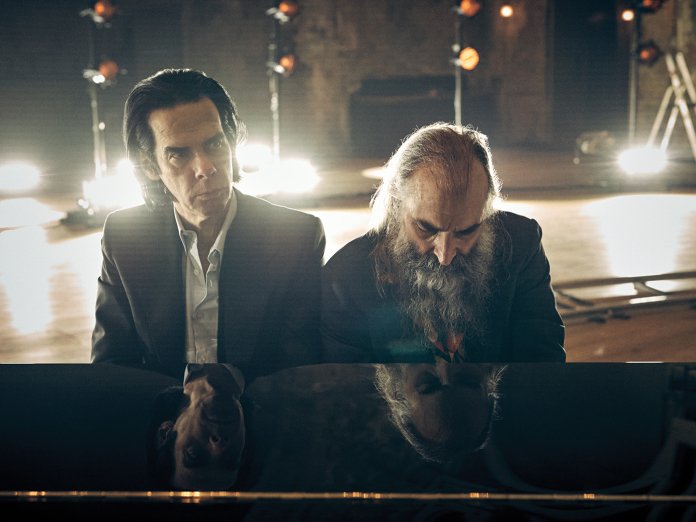Andrew Dominik’s second documentary about Nick Cave begins with a feint worthy of This Is Spinal Tap. “I’ve retrained as a ceramicist,” Cave tells the camera, deadpan, “because it’s no longer viable to be a musician.” And it’s true. Inspired by his collection of Staffordshire pottery, Cave has diversified into trinkets. Not just any trinkets. After a flawed attempt to cast a mantelpiece ornament of a saint boiling in oil, Cave has moved on to a series of 18 figurines telling the story of the Devil. Here is the (unglazed) Devil as a baby.
Here he is “growing up and doing bold, dangerous things”. Does the camera linger when we get to the Devil killing his first child? It does, then it’s on to the Devil becoming separated from the world through his transgressions, then his remorse, and on – spoiler alert – to the Devil bleeding to death in a lake of blood with white swans, “goat-like things” and women holding torches.
The ceramic devilry in this Repair Shop-style interlude reflects the influence of Covid restrictions on Cave’s touring activity. This Much I Know To Be True is a continuation of Cave/Dominik’s 2016 documentary One More Time With Feeling, a haunting film that allowed Cave to address the tragic death of his son Arthur, and showed how he channelled despair into creativity. The intimacy between director and musician remains intact. The core of this film is the creative journey from Ghosteen (grief turned into myth) and Carnage (lockdown isolation, creative communion between Cave and the musically dominant Warren Ellis). Ellis talks of reaching a “meditative state” that “clicks into something transcendent” as he experiments with fractured sounds. Cave puts his more traditional songs aside to respond to Ellis’ wild energy. The musical sequences are impeccably rendered.
Cinematographer Robbie Ryan (who also filmed Cave’s solo lockdown event, Idiot Prayer) has a circular track surrounding the musicians, and after the enforced isolation of Idiot Prayer there is a communal feel to the performances with Cave and Ellis, plus an expanding group of players and singers, reaching an intensity that summons peephole glimpses of religiosity. Marianne Faithfull makes a suitably domineering cameo, removing her oxygen supply to read May Sarton’s Prayer Before Work, an intervention that serves to highlight the way in which Cave’s vocal style has become almost spoken word, fluctuating between sermon and stream-of-consciousness.
Cave is entirely in control throughout, of course, but he uses an interview sequence in the back of a taxi to suggest – or possibly confess – that his life now has “a real sense of meaning” that is not dependent on his work. “I’m much happier than I used to be,” he says, sounding freshly amazed.



